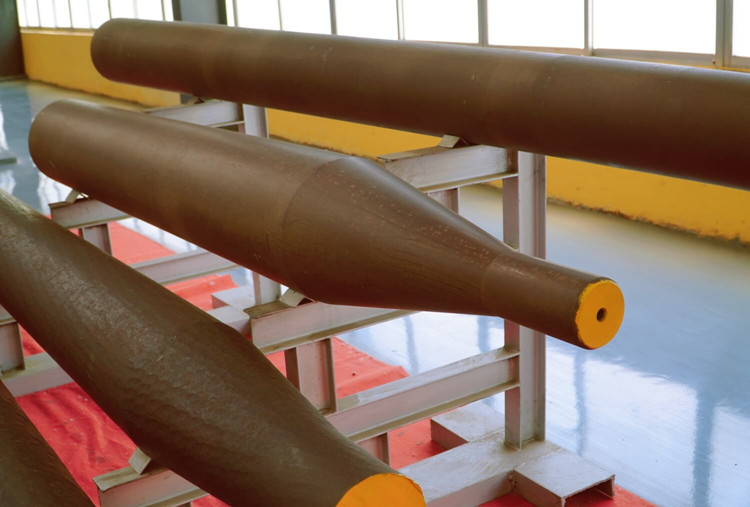- tyler@kirail.com
- +86 15603721115
Forging cleaning is the process of removing surface defects from forgings by mechanical or chemical methods. In order to improve the surface quality of forgings, improve the cutting conditions of forgings and prevent the expansion of surface defects, it is required to clean the blanks and forgings at any time during the forging production process.
In order to improve the surface quality of forgings, improve the cutting conditions of forgings and prevent the expansion of surface defects, it is required to clean the blanks and forgings at any time during the forging production process. Steel forgings are usually cleaned with a steel brush or simple tools after heating and before forging. Blanks with larger cross-sectional dimensions can be cleaned with high-pressure water jets. The oxide scale on cold forgings can be removed by pickling or sandblasting. Non-ferrous alloys have less oxide scale, but pickling should be carried out before and after forging to detect and remove surface defects in time. The surface defects of blanks or forgings mainly include cracks, folds, scratches and inclusions. If these defects are not removed in time, they will have an adverse effect on the subsequent forging process, especially for the forging of aluminum, magnesium, titanium and their alloys. Defects exposed after pickling of non-ferrous alloy forgings are generally cleaned with files, scrapers, grinders or pneumatic tools. Defects of steel forgings are cleaned by pickling, sandblasting (shot), shot blasting, rollers, vibration and other methods.

1. Pickling
Remove metal oxides by chemical reaction. Small and medium-sized forgings are usually loaded into the basket in batches and completed through multiple processes such as degreasing, pickling corrosion, rinsing, and drying. The pickling method has the characteristics of high production efficiency, good cleaning effect, no deformation of forgings, and no restrictions on shape. Chemical reactions during pickling will inevitably produce gases that are harmful to the human body, so an exhaust device should be installed in the pickling room. When pickling different metal forgings, different acids and component ratios should be selected according to the properties of the metal, and the corresponding pickling process (temperature, time and cleaning method) system should be adopted.
2. Sandblasting (shot blasting) and shot blasting cleaning
Sandblasting (shot blasting) uses compressed air as a power to make sand or steel shot move at high speed (sandblasting working pressure is 0.2-0.3MPa, shot blasting working pressure is 0.5-0.6MPa), sprayed onto the surface of the forging, and wiped off the oxide scale. Shot blasting relies on the centrifugal force of the high-speed rotating impeller (2000-30001r/min) to shoot steel shot onto the surface of the forging, knocking off the oxide scale on the forging surface. Sandblasting cleaning has less dust, low production efficiency, and high cost. It is mostly used for special technical requirements and special material forgings (such as stainless steel, titanium alloy), but effective dust removal technical measures must be adopted. Shot blasting cleaning is relatively clean, but it also has the disadvantages of low production efficiency and high cost, but the cleaning quality is higher. Shot blasting cleaning is widely used because of its high production efficiency and low consumption.
Shot blasting and shot peening can not only remove oxide scale, but also harden the surface of forgings, which is beneficial to improve the fatigue resistance of parts. For forgings after quenching or tempering, the work hardening effect is more significant when using large-size steel shots, the hardness can be increased by 30% to 40%, and the thickness of the hardened layer can reach 0.3 to 0.5 mm. In production, steel shots of different materials and sizes should be selected according to the material and technical requirements of the forgings. If shot peening (shot blasting) and shot peening are used to clean forgings, defects such as surface cracks may be covered, which may easily cause missed inspections. Therefore, it is necessary to use methods such as magnetic particle flaw detection or fluorescent flaw detection (see physical and chemical inspection of defects) to inspect the surface defects of forgings.
3. Tumbling
In the rotating drum, the forgings are impacted or ground to remove the oxide scale and burrs on the workpiece. This cleaning method is simple and convenient, but the noise is relatively large. It is suitable for small and medium-sized forgings that can withstand a certain impact but are not easy to deform. The drum cleaning method does not add abrasives, only uses triangular iron blocks or steel balls with a diameter of 10 to 30 mm, without adding abrasives, and mainly cleans the oxide scale by mutual impact. The other is to add abrasives, such as quartz sand, waste grinding wheels, sodium carbonate, soapy water and other additives, mainly through grinding cleaning.
4. Vibration cleaning
A certain proportion of abrasives and additives are mixed in the forging and placed in a vibrating container. Through the vibration of the container, the workpiece and the abrasive are ground against each other, and the oxide scale and burrs on the surface of the forging are removed. This cleaning method is suitable for cleaning and polishing small and medium-sized precision forgings.